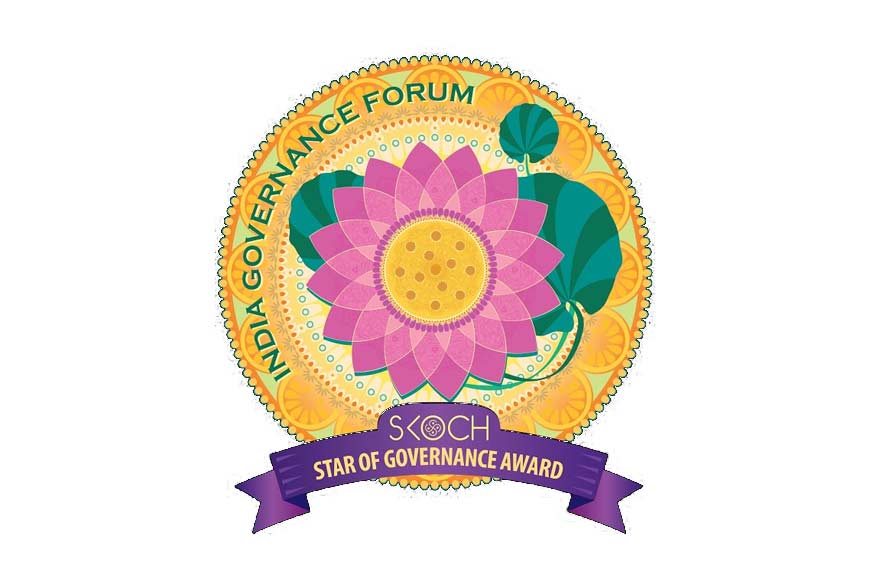SKOCH Star of Governance Award 2022 conferred on WB Forest department - GetBengal story

The West Bengal Forest Department received the "Star of Governance SKOCH Award in Forest" for its effective management of the mangrove plantation drive
West Bengal has become the Best Performing State in the Forestry Sector in 2022 and has been conferred the ‘Star of Governance SKOCH Award in Forest’ for its successful implementation of the mangrove plantation drive. Instituted in 2003, the SKOCH Award salutes people, projects, and institutions that go the extra mile to make India a better nation. SKOCH Award winners include the mighty and the ordinary alike.
The SKOCH State of Governance Report is a unique report, based on primary data and field studies. Here state departments are evaluated by an outcome-based assessment done at the project level. The ground-level impact of the project is studied and evaluated thoroughly, which in turn makes a government department eligible for the SKOCH awards in different categories. Following the SKOCH evaluation process for governance awards, West Bengal topped in the forestry sector in 2022.
 SKOCH Star of Governance Award 2022
SKOCH Star of Governance Award 2022
West Bengal is home to about 40% of mangrove forests in India and is located in the Sunderbans. In fact, the Sundarbans mangrove forest is one of the largest such forests in the world (140,000 ha) that lies on the delta of the Ganga, Brahmaputra, and Meghna Rivers in the Bay of Bengal. However, rising sea levels and subsidence of landmass along with frequent tropical cyclones are posing a threat to the region. The mangrove plants here prevent coastal erosion by mitigating sea surges. Several islands are completely submerged and 100 sq. km of mangroves have been lost in the last two decades.
In contrast, open forest cover grew from 233 square kilometers to 428 square kilometres. Scientists largely attribute the growth in open forest cover to aforestation initiatives. According to a study published in December 2021, about 110 square kilometres of mangroves disappeared within the Reserve Forest (Sunderbans Tiger Reserve) area due to erosion between 2000 and 2020. During the same time, the inhabited part of the Sundarbans Biosphere Reserve gained 81 square kilometres through plantation and regeneration. Mangrove plantations for protecting the coastline from cyclones, storm surges and erosion became a popular theme worldwide after the 2004 Asian tsunami.
In recent decades, there has been a significant level of enthusiasm among government officials, politicians and non-government organizations in planting mangroves on earthen embankments to create a shield against the encroaching sea and cyclonic storm surges. In the Sunderbans region, it gained popularity, particularly after cyclone Aila in 2009. Millions of mangroves were planted along suitable coastal areas. In 2020, the heavy damage to the Sunderbans mangroves from cyclone Amphan prompted the West Bengal Chief Minister, Ms. Mamata Banerjee to announce a mega plantation drive of five crore mangroves under the Mahatma Gandhi National Rural Employment Guarantee Scheme (MGNREGS). The plantation in 2020 was part of a targeted drive by the West Bengal government to plant five crore mangrove propagules (seeds) over 2,500 hectares in the South-24-Parganas district during that year. The Department of Forests, Government of West Bengal was assigned to handle the project. The Forest Department involved local residents and women self-help groups (SHGs) like Srijani and Sabuj Sathi to be a part of the mangrove sapling plantation drive. The objective was to protect livelihoods based on aquaculture, strengthen the soil, stop water encroachment and prevent soil erosion. Protection buffers for the coastal areas were established to safeguard against spikes in the sea level.
Over 5,000 ha of mangrove cover has already been achieved in three coastal districts. Nearly 23 lakh person-days under the MGNREGS system have been deployed. Frontline staff and field laborers received skill training to contribute to the project. The enhanced ecosystem services will generate greater food items and timber products. The green corridor is expected to provide safe cover to the Royal Bengal Tiger population. Women’s SHGs have been brought into the fold for nursery management and planting. Local practices and knowledge have been optimized to identify mangrove propagules with the potential to plan nursery management strategies. For instance, bamboo poles and fishing nets have been used to create ad-hoc barriers against grazing. The local calendar is consulted to design the plantation schedule based on the moon’s phases and tidal patterns. Trenches and ‘fish-bone channels’ have been developed to trap newly-created silt to provide improved germination for the mangrove propagules. Research has been conducted to identify fauna that is complementary to mangrove cover and help bind the soil better and is also viable in high-salinity regions.
According to a government report, in the South 24 Parganas district, 3.2 lakh person-days of work were generated and the beneficiaries were paid Rs 6.52 crore by the government. The 2,500 hectares, of which 1,725 hectares were non-forest areas, were spread over 60-gram panchayats, with Rangabelia being one of them. It is a matter of great pride and honour that the state forest department’s concentrated efforts to increase the mangrove cover in the coastal areas of Sunderbans have been noticed and recognized on the national platform and have been awarded by a prestigious independent organization.











